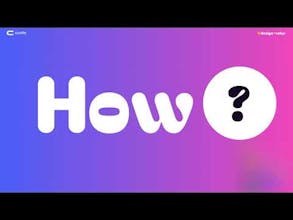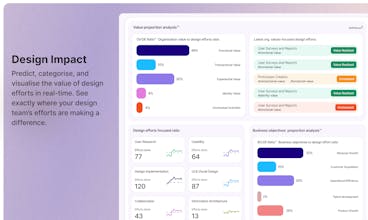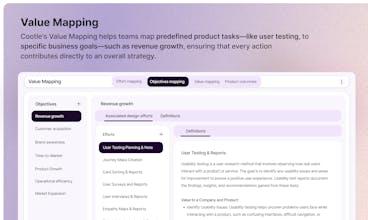
Cootle
Designer-Friendly Workload Management for Product Teams
21 followers
Designer-Friendly Workload Management for Product Teams
21 followers
Cootle is a designer-friendly workload management tool built for product teams! 🚀 It aligns efforts with business goals, outcomes, and values—starting with design. More than task management, it’s a shift toward value-driven, outcome-based design work.




Yusuf Hassan
Maker
📌
Hi everyone,
I’m thrilled to introduce Cootle — a Designer-Friendly Workload Management tool purpose-built for Product Teams! 🚀
**Why Cootle?**
Cootle aligns product team efforts with business goals, outcomes, and values—starting where it all begins: design.
With Cootle, teams can effortlessly define product outcomes, seamlessly track design efforts toward them, and improve the overall value of the product team across the organisation.
This is a two-person project, mostly built during weekends and holidays, so be gentle with us! ❤️
**The Problem We’re Solving**
Many design leaders on LinkedIn have voiced frustrations about how most SaaS tools fail to connect UX/Design efforts to value and impact. While some create frameworks or write books about this challenge, the real struggle begins when trying to implement these frameworks within organizations.
I decided to tackle this challenge head-on by creating both a framework and a product to implement it—and that’s how Cootle was born. 🌱
Most tools measure user behaviour but fail to connect designer and product team efforts to tangible outcomes. Cootle aims to bridge this gap:
Vision/Values ➔ Team Efforts ➔ Product Outcomes ➔ Business Impact.
The Inspiration
When I started building this, I sought advice from Jason Fried of [Basecamp](https://basecamp.com/) and [Hey.com](http://hey.com/). His words, “If you believe something should exist, just build it,” became my guiding principle.
With over 10 years of leading product design and UX teams, I built Cootle to solve a problem I constantly faced. Spreadsheets and task management tools like Jira always fell short.
A conversation with [Josh Payton](https://www.linkedin.com/in/josh...), VP of Design at Wise, further shaped Cootle’s framework, focusing on company IQ and design value realisation. He pointed me to some works that serve as the basis for the framework that Cootle is built on.
Cootle’s Mission
This is our first experiment in automating value realisation and outcome-based work—a shift from output-focused pixel-pushing to strategic, impactful design management.
Struggles Before Cootle
1. Unclear Design Expectations
Vague feedback like “Make it better” or or “Make it more intuitive” leads to misaligned outcomes and frustrations. 😕
2. Outcome Misalignment
Lack of shared understanding between product teams, resulting in divergent goals and misaligned priorities! 🔄
3. Difficulty Measuring Design Impact
No clear way to track how design contributes to business metrics, at scale! 🤷
4. Surface-Level Design Work
Designers limited to visual tweaks and pixel adjustments, unable to contribute to strategic, high-impact work! 🖌️
5. Disconnect Between Leadership and Product Teams:
Leadership lacks visibility into design's business impact, hindering advocacy and executive support! 🚫
6. Limited Resource Visibility
Teams lack clarity on how design resources are allocated across research, usability, and visual design, making optimisation difficult! 👀
---
How Cootle Transforms Product Teams
1. Clear Design Expectations
Every task starts with a defined purpose, eliminating vague feedback and aligning outcomes with goals.
2. Aligned Outcomes Across Teams
Cootle’s Value Mapping features create shared visions between product managers, designers, and executives, improving collaboration.
3. Strategic, High-Impact Design Work
Designers focus on strategic initiatives, delivering measurable value to the organisation.
4. Measurable Design Impact
Track how design supports key metrics like revenue, satisfaction, and efficiency to demonstrate ROI.
5. Enhanced Accountability and Transparency
Document outcomes as Value Realised or Unrealised, ensuring accountability and continuous improvement.
6. Optimised Resource Allocation
Analytics provide insights into resource focus, helping leaders allocate effectively for maximum impact.
7. Improved Executive Visibility
Showcase design’s role in achieving goals, securing executive buy-in and stronger support.
8. Streamlined Documentation
Document tasks with purpose, effort, and outcome for easy tracking and revisits.
9. Progress Tracking on Goals
Measure how design contributes to business goals with Objective Proportion Analysis.
10. Skill Gap Identification
Highlight areas for improvement and plan targeted development for team growth.
---
Join Us on This Journey
Cootle is not just another task management tool. It’s a shift toward value-driven, outcome-based design work. We’d love your feedback and support as we grow this experiment into something even better. 🙌
Try it out and let us know what you think!
Report
Tobi Adebisi
This is a great product to have in a design team. This is a tool I would be happy to use in my team to help streamline work process. I would recommend design teams to take this on.
Report
alexander james
Designing to make it simple for users in not simple. To have it simplified needs a lot of efforts , iterations from people who design it. Many a time these efforts get unnoticed and also not quantified mainly because
1. Product design and product management starts in the early stages of product cycle so many times by the time the product goes live these efforts gets missed by many
2. As designers we are generally not great fan to keep track of effort being spent since the focus is mostly given on how to ideate
These are the issues which cootles helps to solve
Brilliant idea . I hope this helps a lots of people in the field of product design to quantify our work and shows the impact
Report




